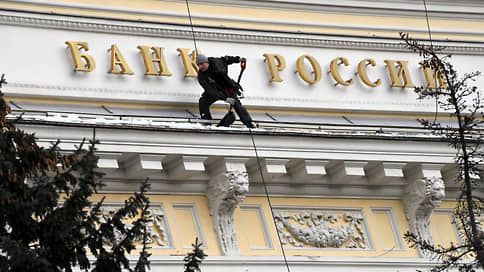Banks are in no hurry to reduce long open currency positions
[ad_1]

The rate of reduction in the open foreign exchange position (OFP) of Russian banks (the excess of foreign currency assets over liabilities) has slowed down significantly. Reducing the OCP generally reduces the potential losses of banks due to exchange rate fluctuations. However, it is profitable for some players to support it for the sake of income due to the devaluation of the ruble.
Russian banks reduced their long-term open balance from $13 billion to $11 billion by the beginning of October, according to a review of financial stability for the second and third quarters published on the Central Bank website (.pdf). In the two previous quarters, the ODP decreased faster – from $23 billion to $13 billion. It was at its peak at the beginning of the sanctions wave, when the ODP increased sharply – from $8 billion in February 2022 to $31 billion in March (the dollar exchange rate was then 104 rubles. /$).
“This is (abbreviation ORP.— “Kommersant”) helps reduce potential losses in the banking sector from exchange rate fluctuations,” the review says. Currently, the open profit margin is 7% of capital.
The Central Bank explained to Kommersant that “the rate of reduction in the open foreign currency surplus has slowed down against the backdrop of an accelerated decline in foreign currency liabilities compared to assets.” “The faster reduction in open profit at the beginning of the year was explained by the fact that banks were converting their blocked assets into rubles. In the second and third quarters, this practically did not happen,” the Central Bank clarified. From April to September, the main factor in the decrease in open balance sheet was the reduction of the long off-balance sheet position by $3.8 billion. On balance sheet open position, on the contrary, increased by $1.2 billion due to the rapid reduction of foreign currency liabilities.
Head of the department for work with financial institutions B1 Gennady Shinin notes that foreign currency liabilities, as a rule, include customer deposits, balances on correspondent accounts with the bank and issued instruments, such as foreign currency bonds, while assets, in turn, are represented by loans, fund balances on correspondent accounts in other banks and purchased foreign exchange instruments.
A bank’s open currency position arises, for example, if foreign currency assets exceed liabilities. Assets in foreign currency are now mainly formed by two categories – these are foreign currency loans and blocked assets, explains Mikhail Matovnikov, director of the Center for Financial Analytics of Sberbank. “The blocked assets have been stuck for years, and foreign currency loans have remained long-term and complex to date, for example, foreign currency syndicates, from which it is problematic to exit under sanctions,” he says.
One of the options to close a position is to accumulate more foreign currency liabilities, but the need for such a solution to the problem is not obvious, “it is necessary to reduce the share of foreign exchange transactions in both assets and liabilities, and not increase it,” says Mr. Matovnikov.
Some players, on the contrary, deliberately maintained a long OVP in order to make money on the devaluation of the ruble, and many succeeded.
But the strengthening of the ruble in October-November no longer brought income, but loss, clarifies Mr. Matovnikov. In October, the loss amounted, according to the Central Bank, to 66 billion rubles, that is, 22.6% of the average monthly profit this year. Data for November will be released later. Until October-November, there has been a profit from revaluation continuously since October 2022, according to Central Bank data.
As Mikhail Matovnikov notes, it is now impossible to balance each currency against the ruble (previously it was necessary to separately balance the positions of the euro against the ruble, the dollar against the ruble, etc.), so banks try to balance at least the total currency position against the ruble when the open market position in individual currencies is open , but in total against the ruble they all add up to zero.
Since the volatility of other currencies (especially hard ones) against each other is lower than against the ruble, this strategy leads to a reduction in risk, explains Mr. Matovnikov. Such a policy is now being promoted as best practice, “but achieving this using purely balance sheet methods is also not easy; derivatives would help, but the derivatives market remains narrow after the departure of non-residents,” he notes.
The Central Bank believes that “by the end of the year we can expect an acceleration in the reduction of the foreign exchange position, since banks will have to convert into rubles all blocked foreign currency assets that have not previously been converted and for which no return is expected.”
[ad_2]
Source link





